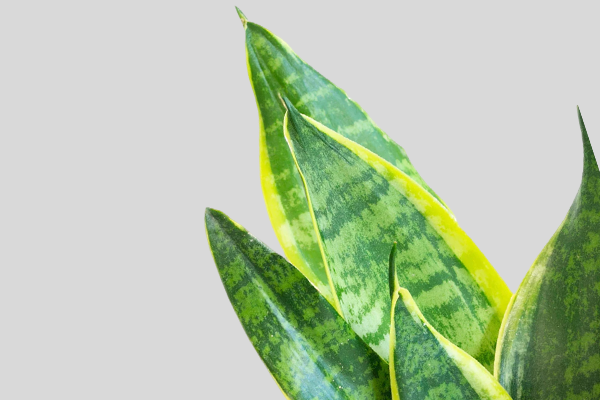
Sansevieria
Sansevieria, also known as snake plant, is one of the most resilient and low-maintenance houseplants. Native to the dry savannas and rocky slopes of West Africa, it has adapted perfectly to indoor conditions. Its stiff, sword-shaped leaves with striking patterns add a stylish touch to interiors. Sansevieria is also valued as an air purifier: it absorbs formaldehyde and carbon dioxide while releasing oxygen at night, making it an ideal bedroom plant.
Placement
Sansevieria tolerates a wide range of light conditions, from bright sun to partial shade. The more light it receives, the more vibrant its leaf patterns. It thrives on south-facing windows but should be slightly shaded from intense midday sun. In low light, growth slows but the plant survives.
Watering
As a succulent, Sansevieria stores water in its leaves and does not need frequent watering. In summer, water once every 1–2 weeks; in winter, every 2–3 weeks. Always let the soil dry completely before watering again. Overwatering is the main danger, causing root and leaf base rot. It’s better to underwater than overwater.
Fertilizing
Feed once a month during the active growing season (spring to autumn) using cactus or succulent fertilizer, or a universal one at half strength. No feeding is needed in winter.
Repotting
Sansevieria grows slowly and requires infrequent repotting. Young plants can be repotted every 2–3 years, mature ones even less often. Choose a stable, shallow pot, as the leaves become heavy over time. Use light, well-draining soil — cactus or succulent mix works best. Drainage is essential.
Temperature
Ideal temperatures range from +18 to +27 °C. The plant tolerates heat and dry air but is sensitive to cold. It can withstand +15 °C briefly, but below that, leaves get damaged. Frost and cold drafts are fatal.
Pruning
Pruning is rarely required. Only remove old or damaged leaves. New leaves always emerge from the base rather than from cut leaves.
Conclusion
Sansevieria is perfect for beginners and busy people. It requires very little care: light, infrequent watering, occasional feeding, and rare repotting. The main rule is not to overwater and not to expose it to cold. With proper care, it can decorate homes and offices for many years.
